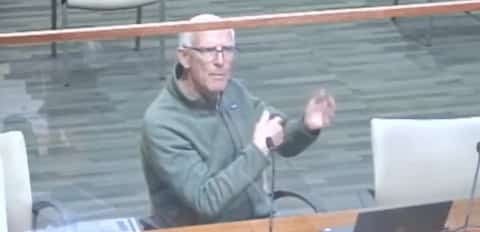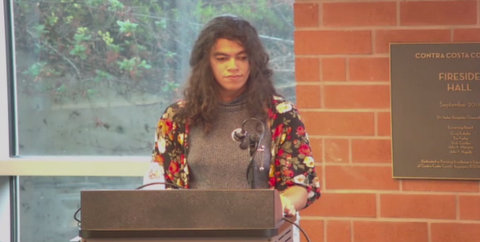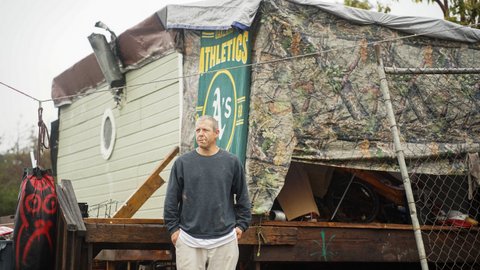
14 Oct Youth Homelessness On The Rise In Richmond
News Feature, Kia Croom
According to a report issued by West Contra Costa County’s Homeless Management Information System (HMIS), there were 617 homeless youth between the ages of (14-24) served by shelters in West Contra Costa County in 2010. Of that number, 59 percent (361) were from Richmond. The 2010 countywide figures represent a 37 percent increase from the previous year.
“I’m scared every day of my life,” said Comstock, her eyes welling up with tears. “I’ve experienced a lot of things that are not okay for a young person to experience.”
These transient youth and young adults often describe their experience with homelessness as a revolving door that takes them from the streets, to hospital emergency rooms, to jails and back again – a vicious cycle that can sometimes seem like it has no end in sight.
Looking back, Comstock can identify the factors that led to her becoming homeless. In high school she came out as a lesbian, struggling to come to terms with her sexual orientation while seeking comfort and acceptance from family, friends and peers who were not always accepting. Soon afterward in early 2008, said Comstock, her emotional whirlwind hit an unexpected peak, when her mother suddenly died in her sleep. The death sent Comstock careening into a state of depression. To numb the pain, she turned to drug use: Comstock’s drug of choice? Crystal Meth. The substance abuse would quickly gain momentum, and life as she had come to know it quickly unraveled.
“My dad kicked me out due to my [drug] use,” she said. “He couldn’t watch me kill myself.”
“If it wasn’t for Calli House (a youth shelter) answering the phone at one in the morning… I would have ended my life,” Comstock said sobbing.
Today, Comstock can celebrate being drug-free for 60 days. However, the taste of victory is bittersweet. She is still homeless and estranged from her family. And although she’s proud to be sober, Comstock longs to repair the relationship with her father. In the meantime, she’ll continue to participate in the program at TLP and is holding out hope to find a job and stable housing. One day, Comstock says, she hopes to harness her experiences to help others, as a counselor for homeless youth.
From Foster Care to the Streets
Joanna was 18 years-old and recently emancipated from the foster care system when she first became homeless.
“I was living with my mom (after foster care), but our relationship wasn’t good, so I ended up moving out. I became homeless and eventually had to go to the Callie House shelter,” she said.
For the two years since then, Joanna has been in and out of emergency shelters, motels and abandoned homes.
“I was basically in survival mode—getting what I needed by any means,” Joanna said. “I didn’t have any income coming in, so I would prostitute to get food and money for motels. It was either that, or live in the streets.”
There was no such thing as a typical day for Joanna, who was focused just on getting by, one day at a time.
“We would get up and leave the motel, me and my ex-boyfriend,” she said. “We would just walk and walk. We had nothing to do in the morning. I wasn’t looking for employment and I knew I wasn’t ready for a job. I was just in survival mode. One night, me, my ex-boyfriend and some friends slept in a ‘bando’ — an abandoned house. It was scary.”
Eventually, Joanna became a client of the Contra Costa County Transition Age Youth (CCTAY) Program. As a CCTAY member, Joanna was able to receive support at the Fred Finch Youth Center in West Contra Costa County. Joanna recalls falling out of communication with the CCTAY program staff on numerous occasions while she was living on the streets, and she credits the persistence and support of her case manager, Jessica Martin, as the thing that helped her turn her life around.
“At times when I was missing, she (Jessica) drove the streets looking for me,” said Joanna. “She didn’t quit. A lot of people would have given up on me, but she didn’t and I’d never had that before.”
Homebound
Life as Joanna knew it was able to change in the blink of any eye, largely because of non-profit community partnerships between the Fred Finch Youth Center and Shelter Inc (both members of the Contra Costa Youth Continuum of Services). The county programs gave Joanna a pathway to move into a partially subsidized apartment, where she is required to contribute 30 percent of her income to rent.
Today, Joanna is the mother of a 10-month-old son, balancing new obligations of motherhood with school. She earned her high school diploma and is currently a student at Contra Costa College. She hopes to one day become a pediatric nurse or physician.
“I’m glad I’m not on the streets anymore,” Joanna said, with a smile that conveyed relief.
Services Can’t Meet Growing Demand
The economy is the primary contributing factor for the countywide increase in homelessness among youth, according to those familiar with the problem in Contra Costa County.
“We hear story after story about how a family lost their housing, or got evicted,” said Jenny Robbins, Director of Contra Costa Youth Continuum of Services.
“The family goes to a friend’s or relative’s house and soon there is not enough space (for the whole family),” Robbins said. “So sooner than later, the oldest youth is the first to go, especially when that youth is not working, when there are behavioral issues involved or when there are untreated mental health problems.”
“There is [only a] small group of beds for this large group of kids who need a home,” he continued.
Contra Costa County, like any other county, has a limited supply of shelter beds and housing vacancies for youth like Joanna and Jessica. Furthermore, the youth served by those programs have complex and diverse needs that exceed the basic services offered such as food and shelter, according to Rosalind Silva, a case manager at Callie House.
“These youth need relationships that offer support and healing,” she said.






No Comments